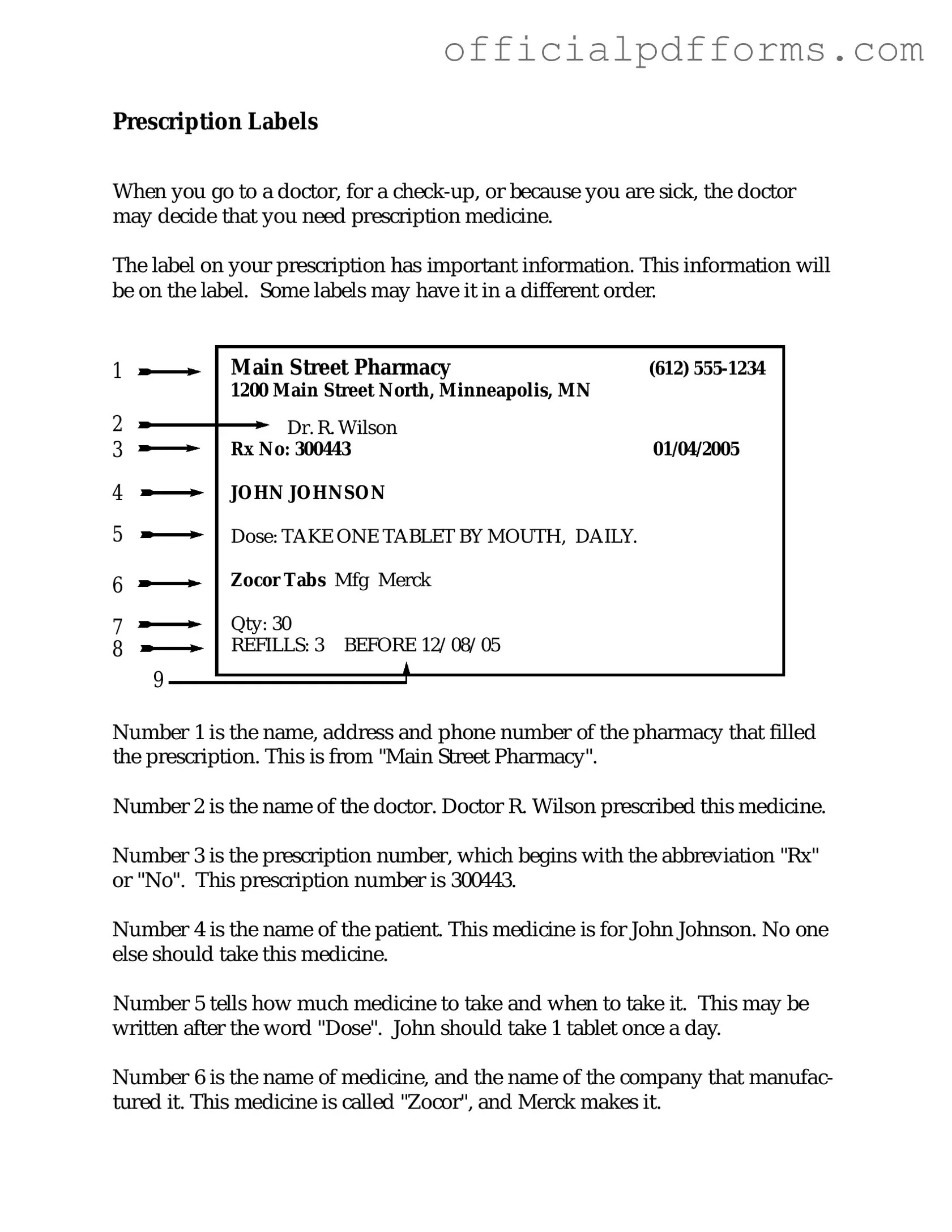The Prescription Label form is a document used to provide essential information about a prescribed medication. It typically includes details such as the patient’s name, the prescribing physician, the medication name, dosage instructions, and any special instructions for use. This form ensures that patients receive clear guidance on how to take their medications safely and effectively.
The Prescription Label form is crucial for several reasons:
-
It helps prevent medication errors by clearly stating the dosage and administration instructions.
-
It provides patients with information about potential side effects and interactions with other medications.
-
It serves as a legal document that can be referenced in case of disputes or questions about the medication.
The prescribing physician or pharmacist is typically responsible for filling out the Prescription Label form. They must ensure that all necessary information is included and that it is accurate. Patients should review the label to confirm that all details align with their understanding of the prescribed treatment.
To ensure accuracy, follow these steps:
-
Review the form carefully when you receive it.
-
Check that your name, medication name, and dosage instructions are correct.
-
Ask your pharmacist or physician any questions you may have about the information provided.
If you notice any discrepancies, report them immediately to your healthcare provider.
If you lose your Prescription Label form, contact your pharmacy or prescribing physician as soon as possible. They can provide a replacement or reissue the prescription. Keeping a record of your medications can also help in such situations.
Yes, the Prescription Label form can be used for refills. When requesting a refill, ensure that the form is still valid and contains accurate information. If any changes have occurred, such as a dosage adjustment or a new medication, a new form may be necessary. Always consult with your healthcare provider regarding refills to ensure safety and efficacy.
